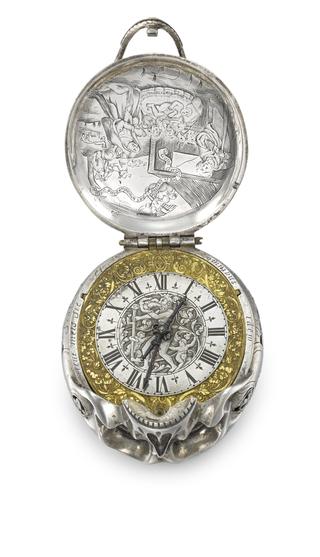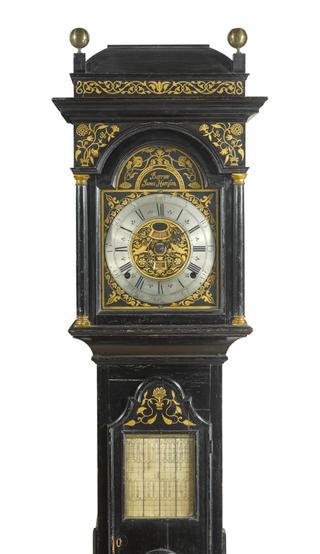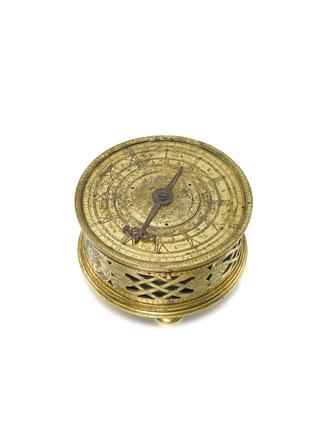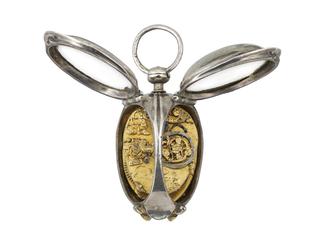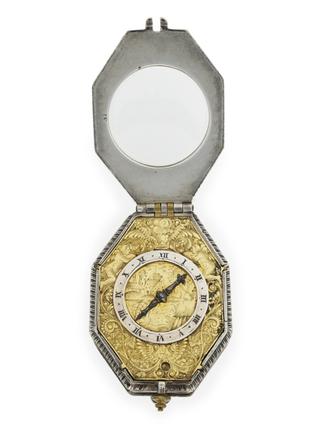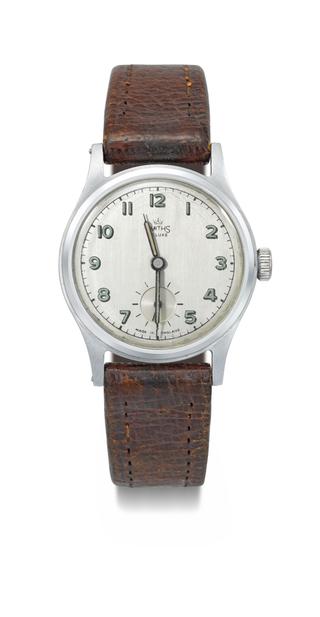
Longcase clock by John Fromanteel, originally fitted with a cross-beat escapement
- maker:
- John Fromanteel



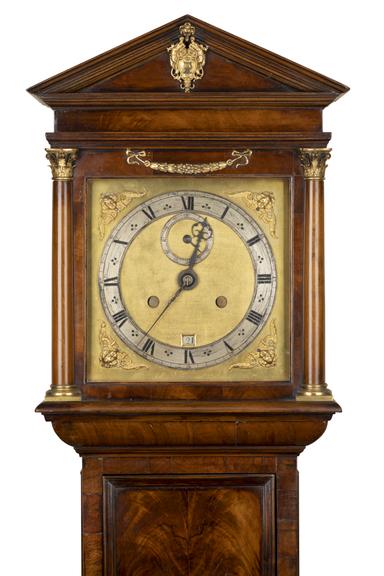
Longcase clock by John Fromanteel, London, c.1668, in a 20th century reproduction case. The square brass dial has a matted centre with a calendar aperture and winding holes with maintaining power shutters, an applied silvered chapter-ring, a subsidiary seconds dial, and cherub spandrels in each corner.Signed under the chapter ring at the base of the dial 'Johannes Fromanteel Londini'. Pierced steel hour and minute hand. The movement has an anchor escapement, bolt-and-shutter maintaining power, latched plates, and a striking train with a count wheel on the inside of the movement. The clock was originally fitted with a ‘cross-beat’ escapement. 8-day duration.
The experimental cross-beat escapement was used by a group of London clockmakers in an attempt to apply long pendulums to clockwork. Most cross-beat clocks were later upgraded.
John Fromanteel, a pioneer of pendulum clocks, became a freeman of the Clockmakers’ Company in 1663.
Clockmakers' Museum No. 1287
Details
- Category:
- Clockmakers
- Collection:
- The Worshipful Company of Clockmakers
- Object Number:
- L2015-4198
- Materials:
- brass (copper, zinc alloy), steel (metal), lead (metal), wood (unidentified) and glass
- type:
- longcase clock
- credit:
- Lent by the Worshipful Company of Clockmakers
